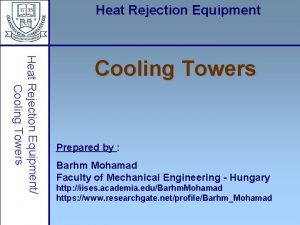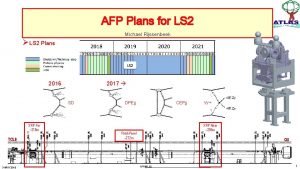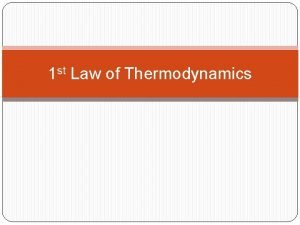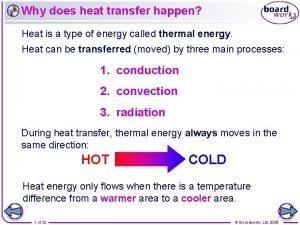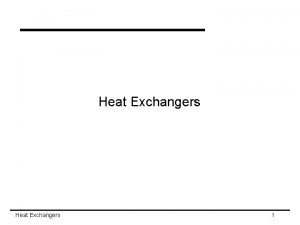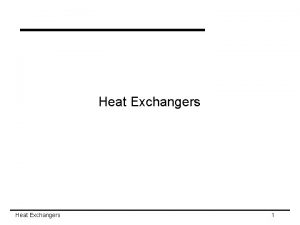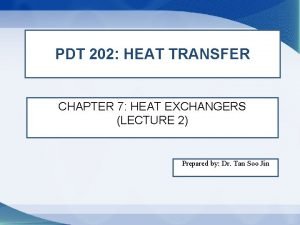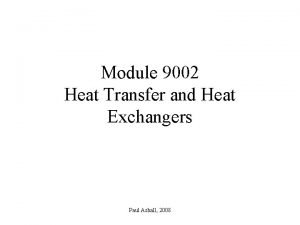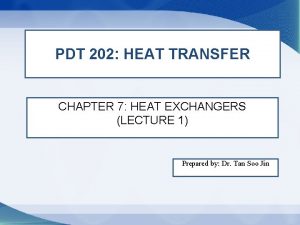HEAT EXCHANGERS THEORY OF HEAT TRANSFER 1 Conductionletim










- Slides: 10

HEAT EXCHANGERS

THEORY OF HEAT TRANSFER • 1 - Conduction(İletim): molecular energy transfer (direct contact of molecules) • 2 -Convection (Taşınım): Energy transfer due to molecular flow (mass motion of group of molecules) -Natural -Forced • 3 - Radiation (Işınım): Electromagnetic radiation

THEORY OF HEAT TRANSFER Q= Ma. CPa. Ta= Mb. CPb. Tb = U. A. LMTD M(kg/s) = Mass flow rate CP (j/kg. C) = Specific heat capacity T (C) = Temperature difference U (W/m 2. C) = Overall heat transfer coefficient A (m 2) = Heat transfer area LMTD (ºC ) (Logarithmic mean temperature difference)

WHAT IS A HEAT EXCHANGER? • A heat exchanger is a piece of equipment built for efficient heat transfer from one medium to another. • Temperature difference is the driving force for energy transfer. • No mixing of the fluids!!

• Heat transfer in heat exchangers : – Between fluids convection – Through the equipment conduction • For this reason, U(overall heat transfer coefficient), which combines two different tranfer types, is used in the calculations of heat exchangers.

• The heat transfer rate at a certain point of heat exchanger depends on the temperature difference at that point. • Since the temperature difference is variable through the exchanger, Logarithmic mean temperature difference, LMTD , needs to be used.

Heat Exchanger Types a- Tubalar heat exchangers b- Plate heat exchangers

Tubular Heat Exchangers • Double pipe heat exchangers are the simplest exchangers used in industries. • One of the fluids flows inside the tube while the other one flows outside the inner tube. • Pipe diameter, number of inner pipes, pipe length and arrangement of the pipes can be varied. Therefore, different tubular heat echangers can be designed easily.

Plate Heat Exchangers • Another type of heat exchanger is the plate heat exchanger. • It is composed of multiple, thin, slightly separated plates that have very large surface areas and fluid flow passages for heat transfer. • This stacked-plate arrangement can be more effective, in a given space, than the shell and tube heat exchanger.

Selection of a Heat Exchanger • Factors to be considered while selecting a heat exchanger: – Construction material, – Pressure and temperature, – Performance parameters (flow rates, pressure drops), – Fluid type – Size of the heat exchanger – Availability and economic factors.


